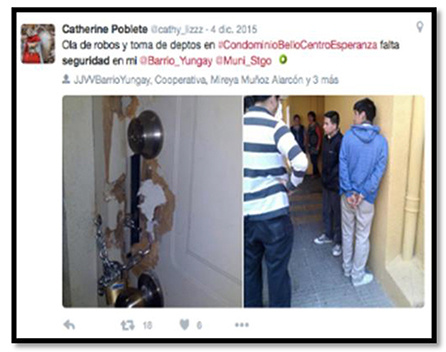
10.15178/va.2018.144.19-35
RESEARCH
MARKET RESEARCH IN SOCIAL NETWORKS: KNOW YOUR CONSUMER SO PUBLISH ON FACEBOOK AND TWITTER. CASE ANALYSIS OF ADT SECURITY SERVICES IN CHILE
LA INVESTIGACIÓN DE MERCADOS EN REDES SOCIALES: CONOCE A TU CONSUMIDOR POR LO QUE PÚBLICA EN FACEBOOK Y TWITTER. ANÁLISIS DE CASO DE ADT SECURITY SERVICES EN CHILE
A INVESTIGAÇÃO DE MERCADOS EM REDES SOCIAIS: CONHECE A TEU CONSUMIDOR PELO QUE PÚBLICA NO FACEBOOK E TWITTER. ANALISES DO CASO DE ADT SECURITY SERVICES NO CHILE
Beatriz Feijoo Fernández1
Juan José Guerrero1
1University of the Andes. Chile
ABSTRACT
Facebook and Twitter have become two windows through which society expresses and presents its opinions and fears: recent studies highlight the fact that someone else can know a person in more detail than their own relatives by what they publish in their Virtual profiles (Youyou, Kosinski & Stillwel, 2015). Focusing on this context of Big Data, this article seeks to reflect on the usefulness of social networks as a source of research to know, define and characterize the target audience, which will serve as guidance for the design of the creative strategy. We are based on the study of a campaign of ADT Security Services Chile (TYCO) for which a variant of ethnography, netnograf ed, was used as methodology, adapted to the analysis of online communities, a simpler faster, and less expensive method than traditional ethnography and more naturalistic than discussion groups or interviews. Non-inductive public information was obtained about the consumption patterns of the target, thus verifying the effectiveness of content analysis in social networks by extracting a security concept with which the consumer was identified and on which the entire creative strategy was ultimately based.
KEYWORDS: Social research; Social Media; Facebook; Twitter; Creative Strategy; Big Data; Netnography
RESUMEN
Facebook y Twitter se han convertido en dos ventanas a través de las cuales la sociedad expresa y expone sus opiniones y temores: recientes estudios ponen de relevancia que alguien ajeno puede conocer con más detalle que sus propios familiares a una persona por lo que publica en sus perfiles virtuales (Youyou, Kosinski & Stillwel, 2015). Situados en este contexto del Big Data, este artículo busca reflexionar sobre la utilidad de las redes sociales como fuente de investigación para conocer, definir y caracterizar al público objetivo, lo que servirá de orientación para el diseño de la estrategia creativa. Se parte del estudio de una campaña de ADT
Security Services Chile (TYCO) para la que se empleó como metodología una variante de la etnografía, la netnografía, adaptada al análisis de las comunidades en línea, método más rápido, más sencillo y menos costoso que la etnografía tradicional y más naturalista que los grupos de discusión o entrevistas. Se obtuvo información pública no inductiva sobre los patrones de consumo del target, comprobando así la efectividad del análisis de contenido en redes sociales al conseguir extraer un concepto de seguridad con el que se identificaba el consumidor y sobre el que finalmente se sustentó toda la estrategia creativa.
PALABRAS CLAVE: Investigación social; Redes Sociales; Facebook; Twitter; Estrategia creativa; Big Data; Netnografía
RESUME
Facebook e Twitter se converteram em duas vitrines através das quais a sociedade expressa e expõe suas opiniões e temores: recentes estudos põem em relevância que alguém alheio pode conhecer com mais detalhes que seus próprios familiares a uma pessoa pelo que publica em seus perfis virtuais (YouYou, Kosinski& Stillwel, 2015). Situados neste contexto do Big Data, este artigo busca reflexionar sobre a utilidade das redes sociais como fonte de investigação para conhecer, definir e caracterizar ao público objetivo, o que servira de orientação para o desenho da estratégia criativa. Parte-se do estudo de uma campanha de ADT Security Services Chile (TYCO) para qual se uso como metodologia uma variante da etnografia, a netnografia, adaptada ao analises das comunidades em linha, método mais rápido, mais simples e menos custoso que a etnografia tradicional e mais natural que os grupos de discussão ou entrevistas. Se obteve informação pública não indutiva sobre os padrões de consumo do Target, comprovando assim a efetividade das análises do conteúdo nas redes sociais ao conseguir extrair um conceito de segurança com o qual se identificava o consumidor e sobre o que finalmente se sustentou toda a estratégia criativa.
PALAVRAS CHAVE: Investigação social; Redes sociais; Facebook; Twitter; Estratégia criativa; Big Data; Netnografía
Received: 04/10/2017
Accepted: 30/01/2018
Correspondence: Beatriz Feijoo Fernández: University of the Andes. Chile
bfeijoo@uandes.cl.
Juan José Guerrero: University of the Andes. Chile
jjguerrero@uandes.cl
How to cite the article
Feijoo Fernández, B.; Guerrero, J. J. (2018). Market research in social networks: know your consumer so publish on Facebook and Twitter. Case analysis of ADT Security Services in Chile [La investigación de mercados en redes sociales: conoce a tu consumidor por lo que publica en Facebook y Twitter. Análisis de caso de ADT Security Services en Chile] Vivat Academia. Revista de Comunicación, nº 144, 19-35. doi: http://doi.org/10.15178/va.2018.144.19-35. Recuperado de http://www.vivatacademia.net/index.php/vivat/article/view/1073
1. INTRODUCTION
In the era of internet and hyper-connectivity, it is logical that, in order to know and contact the consumer, we must resort to social networks. The statistics on penetration and use of social media that are published year after year make it relevant: according to the 2016 Annual Study of Social Networks edited by IAB Spain consultancy, 94% of the people in the world with access to the internet have at least one profile on Facebook. The second most used application is WhatsApp, which is used regularly by almost 9 out of 10 Internet users; Youtube closes the podium by attracting 66% of internet users, maintaining its leadership as a viewing portal for audiovisual material. Twitter is positioned in fourth place and with a percentage of penetration over 50%.
In this context, it is important to highlight the predominant role of Facebook in the digital routines of Internet users. Moreover, the eMarketer 2016 digital trends report predicts that by 2019 the penetration of this social network will remain stable, with an approximate presence of 80% of public aged 12 to 24 years, without still empirical evidence that young people will be less attached to Facebook.
Such is the relevance of social networks among the young public that the latest version of the report issued in 2016 by the Reuters Institute for the Study of Journalism (RISJ) that explores and analyzes the information landscape found that 12% of the total of the sample (50,000 people from 26 countries) takes social networks as the main source of information, which is 28% for young people aged 18 to 24. Likewise, more than half of the surveyed people (51%) confirmed that they use social networks as a source of news each week.
Out of the set of social networks, Facebook becomes a reference “to find, read, see and share news” (RISJ, 2016). As the report highlights, it should be noted that television continues to be the main source of news consumption for older groups, but its use continues to decrease, especially among the younger profile.
Given these usage data that highlight the leading role that social networks have acquired in the life of millennials, it is necessary that research on consumer behavior be oriented towards the platforms in which they are effectively and frequently interacting.
1.1. Social networks as a source of social research
According to the above, it is evident that the user should be contacted in this digital sphere. In the advertising context, the network should be conceived as a meeting place between brands and users where communication, to work, should be designed horizontally, on an equal footing, with the aim of creating a direct, stable and trustworthy link with the audience that generates not only the desire to interact with the brand but also the desire to share content (Sánchez Torres & Restrepo, 2015). It is about creating engagement “which is something more complex than generating a liking or retweets [...] Marketers must have clear perceptions of their consumers, their desires, needs and preferences, connect with them on their own terms” (2015, p 45).
So as to achieve that connection with the consumer, brands must move at the “fast pace” with which the public acts through the network “where decisions are made in seconds, because each time users are more connected to the world, they have greater access to information and they are not only consumers of content but producers of it. They have become hyper-connected and hyperinformed prosumers “(Sánchez Torres & Restrepo, 2015, p.34 ). Hence, one of the keys in the network is to act in real time, implementing real time marketing strategies. In 2015, according to the study Real Time Marketing Report by Monetate and Econsultancy, 70% of the companies recognized that their marketing actions were not fast enough, a quality that at the moment can be vital to gain digital presence, cultivate the loyalty of and attract new consumers.
Beyond improvisation, brands must study behavior in consumers’ social networks and have the ability to adjust the work of communication, treatment and marketing to the demands of the moment, with a deep knowledge of the real and the virtual world (Colombian Association of Marketing, 2015, cited in Sánchez Torres & Restrepo, 2015).
Consequently, social research is postulated as the main resource to combat any attempt at improvisation, the more frequent error in the digital environment given the volume and speed with which information is exchanged.
The number of trends that are generated every day in social networks in which brands could participate are innumerable; however, you must evaluate, in a professional way, which are the ones that matter to their audience and specific niche (2015, p. 43).
Social networks are the ideal place to observe, to research the market, to know the concerns of users, especially those aged 18 to 30 years. “Knowing the personality of others is an essential skill for successful social relationships” (Martínez Valerio, 2016 , page 149) and, in this age of digital communication, social networks are conceived as a platform in which young people not only communicate with each other but also show their personality in a more or less explicit way.
Since Facebook began its global expansion in 2006, the interest that this social network has generated among the scientific community, especially in relation to personality exposure, is remarkable (Stutzman, 2006, Grasmuck et al. 2008, Mayer and Puller, 2008, Pempek et al. , 2009, Back et al. , 2010, Goldbeck, 2011, Junco, 2011), with a relevant percentage of research focused on the academic and / or university context.
Although there is some discrepancy in the veracity of the identity shown in the online environments (Cáceres et al., 2009, Chen & Marcus, 2012, conclude that there is a certain transformation of the real personality in the network), the majority of contributions do agree that the main identifying features of a person reflected on Facebook correspond to those of his offline life (Back et al., 2010, Gosling et al., 2011). In this line, the results of one of the largest pieces of research conducted on Facebook (Kosinski, 2013) also point to a direct relationship between personality, Facebook profile and the visited websites. For this study, the authors designed an application, My Personality, to obtain information about the personality of almost 7.5 million users based on the analysis of their “I like it” on Facebook (Parra et al., 2014).
The truth is that recent research continues to point in this direction of the authenticity and honesty of the statements published on social networks to show that “it is possible to know a person better than their own family through the data they provide on social networks.” (Youyou et al., 2015, cited in Martínez Valerio, 2016, page 152).
In the Spanish context, there are several scientific studies that resort to the observation of Facebook “I like it” to determine patterns of behavior among users. One of them, carried out with the General Directorate of Traffic, made it possible to show the usefulness of the social network for the sociocultural characterization of driver profiles as a preliminary step to the design of advertising campaigns for awareness and prevention when driving (Parra et al., 2014) ; another piece of research in this line, of recent publication (Martínez Valerio, 2016), reflects on the possibility of knowing the personality of a university user profile by analyzing the web pages which they have given the status of “I like it”.
This paper in particular also seeks to know the positioning of users towards a certain concept in a non-inductive way, but in this case by resorting to the analysis of the comments they spontaneously make on social networks (Facebook and Twitter). It is based on the idea that content analysis in social networks is postulated as a more direct and reliable way to define patterns of behavior than other techniques (survey, interview...) that are more difficult to detect.
To date, research on social networks has privileged the statistical analysis of digital audiences and trending topics from predesigned tools such as Google Analytics or Sharedcount. Most of these analytical applications facilitate the statistical treatment of information without going deeply into the contexts of production and social meaning of data (Parra et al., 2014, p.1197).
The main social networks in which market research is carried out are Twitter and Facebook, since they are positioned as the two largest information networks in which more content is shared and in which Internet users publish their comments more quickly.
An important part of the information that Facebook knows about its users is provided by them voluntarily, complemented with another volume of data that can be obtained through their activity in the social network, thus being able to make a fairly complete profile of each user. A similar issue occurs on Twitter, where most people make public tweets, which makes it possible to create databases about potential clients that can be treated scientifically through observation (tracking people, companies, groups, lists or hashtags).
This piece of research aims to go a step beyond determining the personality of users through their comments on social networks. It is sought that this digitally analyzed information serves as a guide for the design of creative strategies of the brands, covering a niche of latent research that links the study of audiences in social networks with advertising effectiveness. Most contributions on research on social networks focus their efforts on studying content generated by a certain audience. Montero (2013) differentiated five lines of study: social networks and learning dynamics; social networks and media; content management in social networks; social networks and audience and markets and social networks. The author pointed out the need to integrate an advertising utility in this type of research on social networks to promote interaction processes between digital audiences and advertisers. “We would be talking about a sixth approach related to social networks, audiences and brands” (Montero, 2013, p.50).
It is in this line proposed by Montero that this research work is integrated, in which the insights published (for three months) by the potential public targeted by a brand (Chileans commenting on security issues on social networks), in this case ADT Security Services, are taken as a creative source.
1.2. Research as a basis for creative strategy
These lines defend the need for applied creativity, the result of a prior process of research and reflection.
Scientific research in advertising creativity may seem out of place in an activity so little subject to the logic of reason and the existential doubts of science. However, scientific research on Advertising Creativity is necessary to produce messages capable of attracting the recipient’s attention and achieving the advertising objectives (Arroyo, 2015).
Intuitively, one can think that creativity in advertising and in other branches of knowledge entails a capricious phenomenon that occurs when it is least expected and from the hand of individuals with privileged minds. However, with experience it becomes more evident that a creative idea is synonymous with usefulness, problem solving, a state that is reached after a deep reflection based on a prior research process.
One must search in reality by understanding the creative process as a method that allows the publicist to arrive at a useful truth that represents and engages his interlocutor. To authors such as Bunge, Bochenski or Gil Múñoz (cited in Arroyo, 2015), advertising creativity is a mental trajectory “understanding it as a series of mental operations carried out in the space of representation of the problem of an advertiser” (2015, p.1).
As proposed by Arroyo following Francisco García (1987), creativity is conceived as a scientific method -useful, instrumental, regular, objective, reasonable (Sierra Bravo, 2001) - that must correspond to the following research phases: definition of the communication problem; documentation, in this case through social networks; formulation of objectives and hypotheses about the originality and effectiveness of the idea itself; verification of these hypotheses, that, in advertising creativity, those techniques proper to the social sciences will have special importance and, finally, evaluation and presentation of the results,
a creative stage of the dissemination of the invention and it has a clear socializing sense [...] It is not enough that the invention is accepted by the experts, it is necessary that it transcends the public. And when it comes to Advertising Creativity, with much more reason [...] It is important that the results of research find their application, be it theoretical or practical (Arroyo, 2015, p.12 ).
Likewise, applied creativity is not achieved by an individual in isolation, in the style of the “lone ranger”, it is a process that must be understood as a team, working together especially in the advertising field in which the multiplicity of points of view can only enrich the usefulness of that initially proposed idea.
2. OBJECTIVES
The case study is presented as part of a piece of research carried out for the company ADT Security Services Chile, a subsidiary of the multinational Tyco. The general objectives of this piece of research were the search and identification of findings, clusters of information, insight and general attitudes that mobilize the purchase and consumption of security in the indicated market, and deepen them for a subsequent strategic and creative campaign based on a methodology that incorporates the use of the social networks Facebook and Twitter.
The analysis comes from a quantitative and qualitative study resulting from the need to understand and fully know Chileans about security issues in order to define and characterize them from the conversations around the issue of security in Chile, and with this, to be able to guide the design of the creative, marketing and communication strategy of said company.
3. METHODOLOGY
The methodology was named The Orange Method, of a qualitative nature, based on the phenomenological paradigm that seeks to understand the meaning of human actions and social practice. It is a variant of Netnography, a new discipline that is being developed to understand the social reality that occurs in the digital world (Del Fresno, 2011). It is then ethnography adapted to the study of online communities (Hine, 2000), a faster, simpler and less expensive method than traditional ethnography, and more naturalistic and discreet than discussion groups or interviews. But, in this case, non-inductive public information is obtained about the symbolism, meanings and consumption patterns of online consumer groups without asking them but, instead, based on the analysis of the comments they spontaneously make on the web.
It was specifically used in this case for the analysis of spontaneous statements made through the social networks Facebook and Twitter by Chilean men and women in the months of October through December, 2015, about issues related to security.
The data were obtained by using an ontological search robot through the use of keywords related to the word and the concept of security, facilitated by the company that is a leader and a pioneer in Chile in the creation of a comprehensive platform for capturing, processing and generating metrics for the analysis of Brandmetric social network information.
The methodological design consists of five consecutive phases:
1. Search: Collection of spontaneous comments from consumers on the web (social networks, web, blogs, etc.) through search software.
2. Analysis: Determine the large clusters of information within the analyzed conversations.
3. Segment: Divide the different groups and / or motivations that mobilize the comments related to the brand, product, service, etc.
4. Empathize: Understand the different motivations that mobilize people to make decisions and express their opinions or react in one way or another. Understand the emotions contained behind the comments.
5. Identification: Recognition of insights, innovation opportunities, emotions and sensations that make it possible to work with powerful links to develop creativity and strategy with greater precision.
4. RESULTS
According to the proposed methodological design, the five phases of analysis work were followed:
4.1. Search
The resulting sample was 321,169 collected comments, 59.9% (123,255 comments) out of which corresponded to people who, in their profile or account of the social network, identified themselves as men, and 40.1% (82,421 comments) corresponded to people who identified themselves as women in their profile or account of the social network.
Regarding the distribution by communication channel, 59.3% of the total of the issued comments were through the social network Facebook, while 40.7% did so through the social network Twitter.
4.2. Analysis
Once the data were collected, they were divided into the large conceptual groups to which they belonged, thus dividing them into: alarm, assault, robbery, delinquency, security, portonazo and theft.
4.3. Segment
After the division by groups, comments were segmented according to the different motivations that mobilized people to leave their opinion on social networks: feeling of insecurity; feelings of impotence; robbery as something routine; distrust in authorities, companies and institutions; concern; solution in their hands and the need to organize and group.
4.4. Empathize
Comprehensive analysis of the different identified comments segments:
1. Feeling of insecurity: Comments for this segment alluded to a sense of insecurity anywhere, people do not feel safe either in public or private places. Comments such as: “In Alto Las Condes mall, there is no security to enter any time, anyone has free access”; “Lack of security in my neighborhood @Barrio_Yungay”, reaffirmed this feeling.
Source: Twitter

Photo 1: Capture a tweet that shows that feeling of insecurity
2. Feeling of impotence: People are observed with feelings of impotence in the face of insecurity, in their comments they describe a problem that has no solution and that their requirements are not heard by both the government and the authorities, neither by companies. “@Carabineros does not take care of neighbors’ demand”, “nobody cares about security”, “nobody takes charge”, “today it is legitimate to steal in Chile” (supported by visual material of legal causes).
Source: Twitter
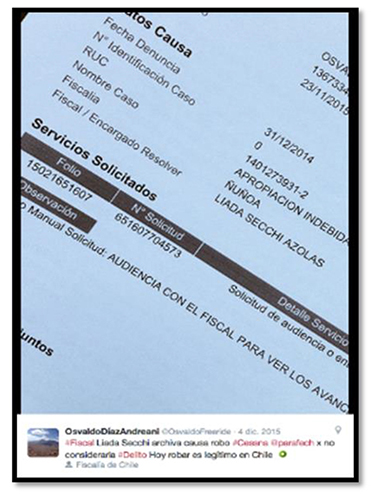
Photo 2: Capture of a tweet that exemplifies the feeling of impotence.
3. Robbery as something routine: In their comments, a habit of robbery is observed, something that happens to be the daily routine, a fact that is not surprising and that begins to look like every day. “Despite the decline in robbery, I have faith with my plea today,” “waiting for them to attend me while I think of the robbery committed on my person yesterday, what bad luck”, “after I was robbed I went to Francisca’s place.”
4. Distrust in authorities, companies and institutions: The comments showed lack of confidence and reliability in the competence and ability of authorities, companies and institutions to solve problems. Memes or comments such as: “it’s just the same whether to have the alarm or not if nobody takes charge”, “and in the next elections they will again promise security”, “Criminals, the party is over for you,” said a former president, “and nothing was done,” “the security problem transcends for more than 40 years.”
Source: Twitter
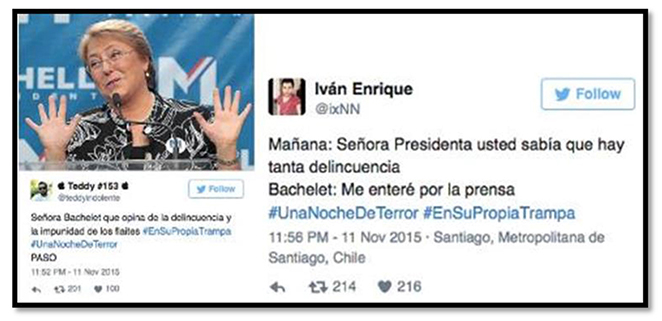
Photo 3: Twitter captures in which citizens show their lack of confidence in the Chilean government.
5. Concern: Robbery is positioned as one of the biggest concerns, it became a trend on Twitter and it is observed that it begins to affect the quality of life of Chileans.
Source: Facebook and Twitter
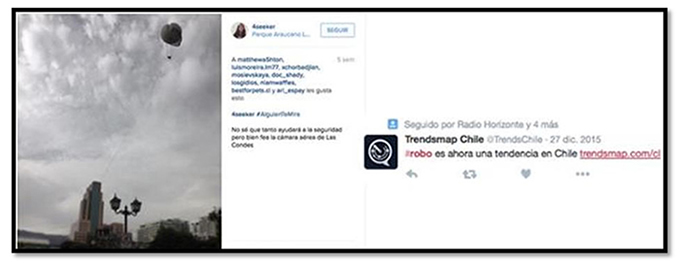
Photo 4: Examples of comments on Facebook and Twitter in which robbery is a major concern among citizens.
6. Solution in their hands: They believe that the solution can come from themselves and begin to demonstrate, through different actions portrayed in images and comments, that they themselves are able to cope with robberies and take justice into their own hands.
Source: Facebook
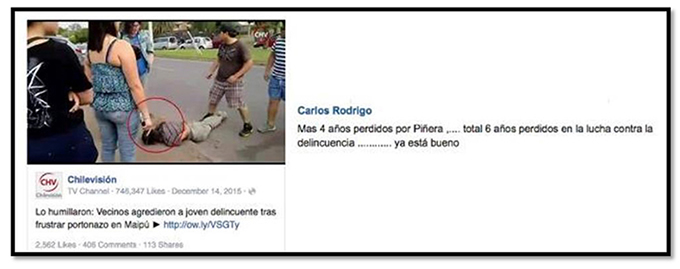
Photo 5: Facebook entries that show the proactivity of anonymous people in terms of security.
7. Need to organize and group: Given the impotence and few solutions, they begin to group and gather to face the problem. To do so, they use WhatsApp groups organized by neighbors, security apps like SOSAFE and make demands on the authorities organized in groups of neighbors.
Source: Facebook
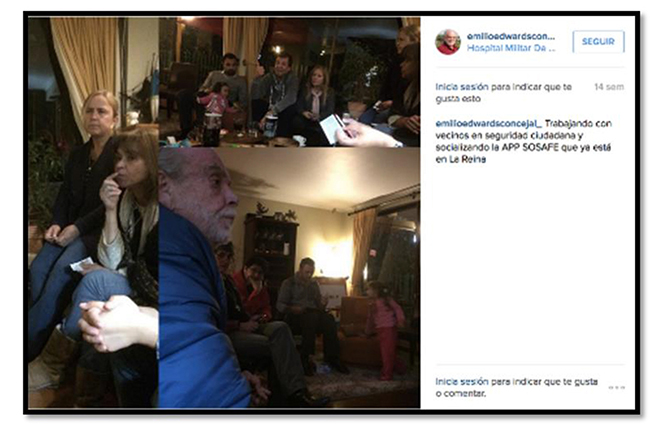
Photo 6: Facebook entry with photographs that exemplifies how neighbors organize themselves to combat insecurity
Source: Twitter
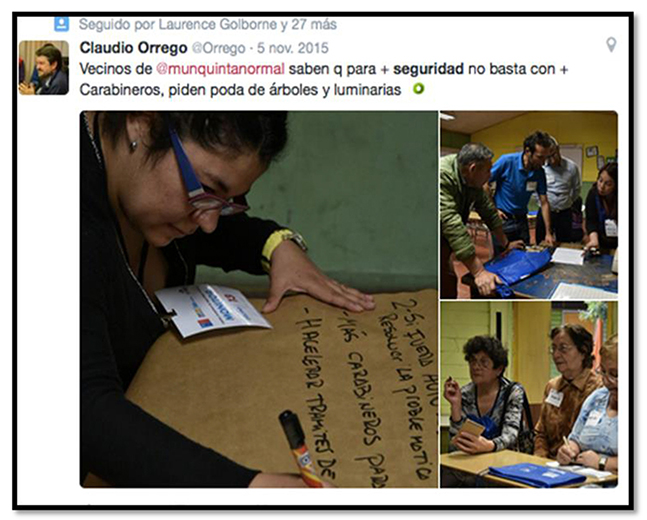
Photo 7: Twitter entry with photographs showing the neighborhood commitment to get safer neighborhoods.
4.5. Identification
It was possible to recognize insights, opportunities for innovation, emotions and sensations that made it possible to work with powerful links to develop creativity and strategy with greater precision.
Comments such as: “App notifies my acquaintances and neighbors”, “I have an alarm and it alerts me on the cell phone”, “the house already had an alarm” led to understanding the use of alarms, why they do not hire, how and for what they use them
Regarding robbery, the comments led to understanding how they are meeting and what their processes are: “a neighbor organized a WhatsApp”, “we must be vigilant”, “if something happens we call the phone emergency of the municipality”, “my neighbor warned us and we could stop him.”
Regarding the hiring of security companies, we could discover feelings, fears and opinions that influence how they behave as consumers of them: “why pay monthly if they do not work at all”, “if the alarm sounds, they call you by phone, and If you are held at gunpoint? “,” when the security arrives, they cannot even enter the house, they are not useful “.
5. DISCUSSION
The entire process described above led research to discover a cultural change in the country. For many years, since the 1980s, in the socioeconomic uptowns in Chile, it is not often that there is contact among neighbors, who live in houses or apartments and do not know, or greet, or talk with their neighbors. They do not know who lives next door, nor do they want to know. They live practically in “bubbles” where it is even unlikely to see a greeting in the elevator of a building. Everyone cares about themselves and, the less contact they have with those around them, the better.
The problem of insecurity brought with it an improvement in Chilean society, equated the most popular neighborhoods with the uptowns. Faced with the inability of the authorities to solve the problem of security, the neighbors reconnected, they began to meet and group, helped by technology.
This discovery was what was communicated to the creative agency and the security firm, with which they managed to devise a successful advertising campaign “neighbor to neighbor” that represents and reflects the feelings and deepest attitudes of Chileans concerning security (the piece can be viewed at https://www.youtube.com/watch?v=I5f_I9pRg9s )
Source: https://www.youtube.com/watch?v=I5f_I9pRg9s
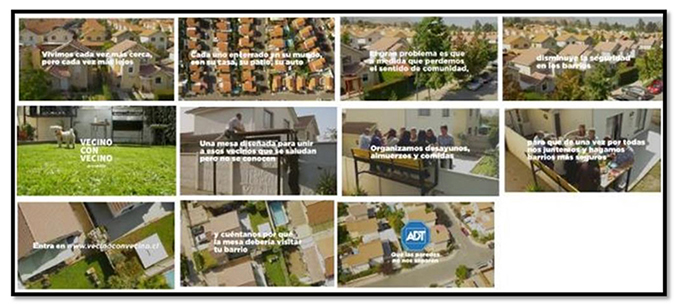
Figure 8: Frames taken from the campaign under study.
6. CONCLUSIONS
The research design outlines a work methodology that allows and is offered as a complement to scientific research on audiences and societies for the subsequent creative development of communication or marketing to continue improving the consumer experience.
Through the analysis of social networks: social characteristics, behaviors, opinions, emotions, feelings and patterns of use concerning a particular concept, has allowed us to deepen the sociocultural characterization of the target groups by identifying powerful insights for the realization of creativity and strategies.
The data analysis model The Orange allows us to provide additional and relevant information of the interest groups, in this case of the Chileans facing the issue of insecurity, establishing a comprehensive analysis of the sociocultural concerns and resistances regarding an issue in particular for the design of advertising campaigns and specific marketing strategies.
REFERENCES
1. Arroyo I (2005). Metodología de la investigación científica en Creatividad publicitaria. Enlaces: Revista del CES Felipe II, 4, 1-12.
2. Back M, Stopfer J, Vazire S, Gaddis S, Schmukle S, Egloff B, Gosling S (2010). Facebook Profiles Reflect Actual Personality, Not Self-Idealization. Psychological Science, 21(3):372–374. doi: 10.1177/0956797609360756.
3. Cáceres MD, Ruiz-San-Román JA, Brändler G (2009). Comunicación interpersonal y vida cotidiana. La presentación de la identidad de los jóvenes en Internet. Cuadernos de Información y Comunicación, 14, 213-231.
4. Chen B, Marcus J (2012). Students’ self-presentation on Facebook: An examination of personality and self-construal factors. Computers in Human Behavior, 28(6):2091-2099. doi: 10.1016/j.chb.2012.06.013.
5. Del-Fresno M (2011). Netnografía. Barcelona: UOC.
6. Econsultancy & Monetate (2014). Real-Time Marketing Report. Nueva York: Centaur Media. Recuperado de https://econsultancy.com/reports/real-time-marketing-report/
7. Elogia Media (2016). Estudio Anual de Redes Sociales. Madrid: IAB Spain. Recuperado de http://www.iabspain.net/wp-content/uploads/downloads/2016/04/IAB_EstudioRedesSociales_2016_VCorta.pdf
8. Emarketer (2015). Tendencias del Marketing Digital 2015. Santiago de Chile: IAB Chile. Recuperado de http://www.iab.cl/tendencias-marketing-digital-2015-emarketer/
9. Golbeck J, Robles C, Turner K (2011). Predicting personality with social media. En CHI ‘11 Human Factors in Computing Systems (pp. 253-2262). NY, USA: ACM New York. doi: 10.1145/1979742.1979614.
10. Gosling S, Augustine A, Vazire S, Holtzman N, Gaddis S (2011). Manifestations of Personality in Online Social Networks: Self-Reported Facebook-Related Behaviors and Observable Profile Information. Cyberpsychology, Behavior, and Social Networking, 14 (9):483-488. doi: 10.1089/cyber.2010.0087.
11. Grasmuck S, Martin J, Zhao S (2008). Identity construction on Facebook: Digital empowerment in anchored relationships. Computers in Human Behavior, 24(5):1816-1836. doi: 10.1016/j.chb.2008.02.012
12. Hine C (2004). Etnografía virtual. Barcelona: UOC.
13. Junco R (2011). The relationship between frequency of Facebook use, participation in Facebook activities, and student engagement. Computers and Education, 58(1):162-171. doi: 10.1016/j.compedu.2011.08.004
14. Kosinski M, Stillwell D, Graepel T (2013). Private traits and attributes are predictable from digital records of human behavior. Proceedings of the National Academy of Sciences, 110(15):5802-5805. doi: 10.1073/pnas.1218772110
15. Martínez-Valerio L (2015). Conocer la personalidad de los universitarios a través de los “me gusta” de Facebook. Prisma Social: revista de ciencias sociales, 15, 147-179.
16. Mayer Z, Puller S (2008). The old boy (and girl) network: Social network formation on university campuses. Journal of Public Economics, 92, 329–347. doi: 10.1016/j.jpubeco.2007.09.001
17. Montero L (2013). Reflexiones sobre la investigación en redes sociales: Facebook y Twitter. En Actas I Congreso Internacional de Comunicación y Sociedad Digital (pp. 41-52). Logroño: UNIR.
18. Parra P, Gordo AJ, D’Antonio SA (2014). La investigación social aplicada en redes sociales. Una innovación metodológica para el análisis de los «Me gusta» en Facebook”. Revista Latina de Comunicación Social, 69, 195-212. doi: 10.4185/RLCS-2014-1008
19. Pempek T, Yermolayeva Y, Calvert S (2009). College students’ social networking experiences on Facebook. Journal of Applied Developmental Psychology, 30(3):227-238. doi: 10.1016/j.appdev.2008.12.010
20. Reuters Institute for the Study of Journalism (2016). Reuters Institute Digital News Report 2016. Oxford: University of Oxford. Recuperado de http://reutersinstitute.politics.ox.ac.uk/sites/default/files/Digital-News-Report-2016.pdf
21. Sánchez-Torres WC, Restrepo JC (2015). Marketing en tiempo real y el fortalecimiento del mercadólogo. Escenarios: empresa y territorio, 4(4):33-52.
22. Sierra-Bravo R (2001). Técnicas de Investigación Social. Teorías y ejercicios. Madrid: Ediciones Paraninfo S.A.
23. Stutzman F (2006). An evaluation of identity-sharing behavior in social network communities. Journal of the International Digital Media and Arts Association, 3(1):10-18.
AUTHORS
Beatriz Feijoo Fernández
PhD in Communication and a degree in Advertising and Public Relations and Audiovisual Communication from the University of Vigo (Spain). She works as a professor and researcher at the School of Communication of the University of the Andes (Chile). She has also been professionally involved in the field of journalism and institutional communication, working for several years in the Communication Area of ??the University of Vigo. Author of several publications and scientific articles on communication and children.
http://orcid.org/0000-0001-5287-3813
Juan José Guerrero Cortés
Bachelor of Advertising from the University of the Pacific (Chile). Master of Consumer Behavior from Adolfo Ibañes University (Chile) and Doctor of Communication from the University of the Andes (Chile). He works as a professor and researcher at the School of Communication of the University of the Andes. Professionally, he was Creative Director, for over 9 years, in Advertising Agencies and was Marketing Director and General Manager in several Brand Consulting Companies.
https://orcid.org/0000-0002-7286-3660